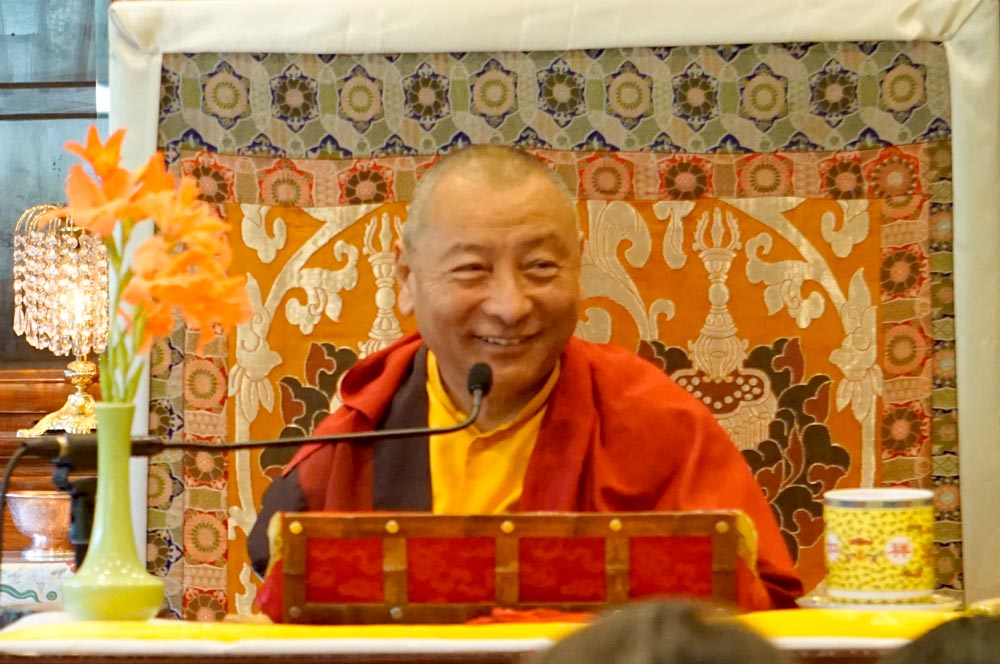
Jetsun Milarepa, in one of his songs, sang: “There are three nails to meditation. If I explain them: the first is that thoughts are the dharmakaya. The second is that awareness is lucidity. The third is resting relaxed without alteration.”
The first nail, we would say “key point” of meditation [Rinpoche at this point said jokingly in English, “eight inch,” regarding the nails], is that thoughts are the dharmakaya. We don’t need to separate them or think they are two different things. Although we normally think of our thoughts as problematic or defective or deluded and so on, the nature of them, no matter how they arise, is the dharmakaya. This means that when you look at the nature of thoughts what you’re seeing is the dharmakaya. And the second point, that awareness that is the faculty within the mind that looks and that thinks, is itself pure lucidity. It’s nothing other than simply the mind’s lucidity, its capacity to know, to think, to look, and so on. Therefore, since thoughts are the dharmakaya, and since the awareness that looks at thoughts is merely the lucidity that is the display of the dharmakaya, then the correct way to look is simply to rest relaxed. Because by being relaxed, there is no engagement in duality, and without alteration, because there is no need to alter anything within the mind.
So as Jetsun Milarepa said, if you can rest comfortably, relaxed, and freely without attempting to restrict or imprison your mind, then you will be able to naturally see the nature of whatever thoughts arise. Since that which sees the nature is nothing other than that nature itself seeing itself, then whatever thoughts arise will automatically, vividly, and evidently in your experience arise as the naked awareness-emptiness, lucid awareness that is itself the emptiness, the nature of thoughts, and its naked because there is no dualizing, and that is the dharmakaya. Therefore, in that state, the arising of thoughts and the liberation of those thoughts through the recognition of their nature are simultaneous.
[From a teaching on the Mahamudra of Terchen Barway Dorje, Part 2 by Bardor Tulku Rinpoche. Translated by Lama Yeshe Gyamtso.]
